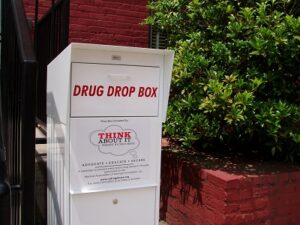The University of Georgia Police Department has put together the following crime prevention tips to help students and others stay safe on campus.
Crime Prevention Tips
Stopping Sexual Assault
College can be one the most memorable times in a person’s life. The University of Georgia and the city of Athens offer an abundance of social opportunities. Parties and good times with friends are an integral part of the college experience.
However, we strongly encourage all of our community members to take a stand against rape / sexual assaults. We encourage everyone to take just a few minutes to watch these high-impact videos and ask themselves, “Which one will you be?” One person’s good decision can help prevent sexual assaults and rapes on campus. Please, feel free to share with friends.
If you have been a victim of a sexual assault or know someone who has, please feel free to contact us at (706) 542-2200. If you would rather not talk to police, then we encourage you to seek help from community resources, such as the University Health Center Relationship and Sexual Violence Prevention Center at 706-542-SAFE (7233), or the North Georgia Cottage Sexual Assault Center at 706-546-1133. And, as always, please do not hesitate to report suspicious behavior.
Drug Facilitated Rape
Drug facilitated rape and sexual assaults are crimes that all college students should be aware of. These crimes involve a criminal using a drug to make a victim more vulnerable to an attack and/or less likely to report the crime due to fragmented memory.
There are over 60 drugs known to have been used in drug facilitated rapes or sexual assault situations. Some of the most common are alcohol, rohypnol, gamma hydroxy butyrate (GHB), and ketamine. A variety of prescription and over the counter drugs have also been used as tools by rapists who have sought to make their victims more susceptible. Many of these drugs can be slipped into a drink, and once dissolved, are odorless, tasteless and colorless.
To help safeguard yourself against drug facilitated rape and sexual assaults, consider the following tips:
- Drink responsibly
- Keep your drink with you at all times
- Never take an opened drink from someone you do not know or trust
- Avoid taking drinks that may have candy or other objects in them
- Only “go out” with people you know and trust
- Watch out for your friends as well as yourself
If you feel that you or someone you know has been the victim of drug facilitated rape or sexual assault please contact the nearest police department, hospital and/or rape crisis center.
Visit the The Cottage Sexual Assault and Children’s Advocacy Center’s website for more information regarding sexual assault victim services or to find how you might volunteer to help victims.
Alcohol Awareness
Of the current student body in America, between two and three percent will eventually die from alcohol related causes, about the same number as will get advanced degrees, master’s and doctorate degrees combined. For the over 12 million college students in the United States, the annual consumption of alcoholic beverages totals well over 430 million gallons. That is the same amount it would take to fill an Olympic-sized swimming pool on every college and university campus in America. Alcohol is involved in sixty-five percent of traffic fatalities, fifty percent of all murders, thirty-three percent of all suicides and forty percent of all fatal car crashes.
For these reasons it is important that you know the facts so you can “call the shots.”
Impairment vs. B.A.C.
- Blood Alcohol Concentration (B.A.C) refers to the amount of alcohol contained in 100ccs of blood and is legally expressed in grams percent.
- Impairment begins at .05 grams percent for adolescents and adult females and at .08 grams percent for adult males.
- Impairment is any time you have consumed or ingested enough of any substance to alter physical, mental and/or emotional functioning. Impairment may cause accidents, drinking and driving crashes, legal problems, decrease in job performance, fights, property destruction resulting from poor judgement, etc.
- Impairment occurs much sooner than a person feels or looks drunk. Impairment affects vision, reaction time and perception (especially of time and space).
Factors That Can Alter the Effects of Alcohol
There are individual factors that can speed up the effects of alcohol. As a result, your B.A.C. might be just a .06 or .08 grams percent and your impairment level may be as high as .10 or .12 grams percent. The following are examples of the factors and part of the explanation:
- Stomach Content
- Drinking on an empty stomach significantly speeds up the effects of alcohol.
- Type of Drinking
- The higher the percentage of alcohol, the faster the impairment. If the alcohol is mixed with food based products (i.e. juice or milk), it slows down the impairment. If alcohol is mixed with water or carbonated beverages, it speeds up the impairment.
- Other Drugs
- Many over-the-counter medications can speed up the effects of alcohol, such as cold medications, antihistamines, aspirin, etc. The same is true for several illegal drugs.
- Mood and Expectations
- If you consume alcohol when either excited or depressed, impairment occurs quicker.
- Altitude
- One drink on a plane is equivalent to two on the ground.
- Recent Illness or Tiredness
- Impairment can happen faster when drinking after even a minor illness or a significant lack of sleep.
- Age
- Older people and adolescents can not metabolize alcohol as quickly and can be impaired faster.
- Male / Female
- Females have more fat content and therefore feel the effects of alcohol faster and stay impaired longer.
- Body Size
- If you have a smaller liver you may not be able to metabolize the normal ½ oz. of pure alcohol ( the amount in an average drink) per hour. In addition, the more fat content you have, the faster you will become impaired.
- Oral Contraceptives and/or Menstruation
- Females will be impaired quicker for three or four days prior to their period and if they are on oral contraceptives.
Tolerance vs. Impairment
- Tolerance does not offset impairment-it just delays it and some impairment, that is not obvious, occurs early (even with high tolerance).
- High tolerance gives false security that you “handle” your alcohol and, therefore, you are frequently at a higher risk for accidents because you generally take more chances.
- People with high tolerance are chosen to drive because they do not appear to be impaired.
- Other drug use, especially marijuana, may give the false impression of tolerance.
- High tolerance is not effective in offsetting impairment in emergency or unexpected situations.
How Does All This Affect Me?
Personal Consequences
Anyone who drinks to the level of impairment is at risk for a multitude of problems. These problems range from relationship issues, decrease in performance levels, reduction in abstract mental functioning, cumulative organ damage, increased occurrence of date and acquaintance rape, unplanned and protected sex, legal problems, automobile crashes, alcoholism, and early death.
Negative Effects
Consequences resulting from alcohol or other drug use experienced by students at least once in the past year:
- Had a hangover – 63.0%
- Became nauseated or vomited – 49.9%
- Later regretted actions – 39.3%
- Drove while intoxicated – 36.0%
- Got into an argument or fight – 33.2%
- Missed class – 30.4%
- Experienced memory loss – 28.0%
Pamphlets
Video
Vehicle Theft
Vehicle theft is the most expensive property crime in America with an estimated cost of over $4.6 billion annually. USA Today and Alarms.com have compiled statistics on the most commonly stolen vehicles in the United States as well as the most commonly stolen vehicles in Georgia for 2015. You might be surprised by what they found:
Top 10 Vehicles Stolen In The U.S.
- Honda Accord
- Honda Civic
- Toyota Camry
- Toyota Corolla
- Chevrolet Silverado
- Acura Integra
- Cadillac Escalade
- Ford F-350
- Nissan Altima
- Chevrolet Tahoe
Top 10 Vehicles Stolen In Georgia
- Honda Accord
- Chevrolet Full Size Pickup
- Ford Full Size Pickup
- Dodge Caravan
- Honda Civic
- Dodge Full Size Pickup
- Toyota Camry
- Chevrolet Impala
- Ford Taurus
- Ford Explorer
During 1998 there were 11 vehicles stolen from the UGA campus. In no particular order they were:
Vehicles Stolen at The University of Georgia (1998)
- 1990 Nissan Pathfinder
- 1990 Honda Accord
- 1990 Nissan Stanza
- 1991 Honda Accord
- 1992 Chevy Corsica
- 1993 Mitsubishi Diamante
- 1991 Chevy C1500 Pickup
- 1987 Oldsmobile Delta 88
- 1984 Chevy Caprice
- 1998 Toyota Tacoma
- 1994 Chevy Z71 Pickup
During 2015 there were 4 vehicles stolen from the UGA campus. In no particular order they were:
Vehicles Stolen at The University of Georgia (2015):
- 2006 Honda Motor Scooter
- 1992 Honda Civic
- 1996 Toyota Camry
- 2003 Honda Accord
The most surprising thing about these lists is the conspicuous absence of expensive luxury models. Auto theft is often a crime of opportunity. Thieves looking to strip a car for parts generally steal cars which have the greatest market for parts. These are generally older cars or cars which are most popular with American consumers, not brand new expensive automobiles. Kids looking to go for a joyride or petty thieves looking for stereo equipment are not necessarily looking for the nicest car in the lot. More often than not, they are looking for the easiest car to steal. DON’T MAKE THEIR JOB EASY!
Tips For Protecting Your Vehicle From Theft
- Do not leave your keys in your car or leave your car running while unattended, not even for a few seconds. What could be easier for a thief than to slip behind the wheel of your idling vehicle and drive away?
- Leave doors locked and windows rolled up at all times. Getting into the car is half the battle. Don’t allow the thief free admission.
- Park in well lit well traveled areas. Although it may only take a thief a few seconds to steal your car, he would prefer not to be seen while doing it.
- Keep valuables and packages out of sight. These may draw the thief’s attention to your vehicle. Once inside, the thief may decide to steal your car as well as your valuables.
- Use deterrent devices like car alarms, steering wheel locks (club type), electronic kill switches or other devices on the market. Although none of these devices are foolproof, they will make your car a more difficult target. For Mopeds use a u-lock or locking chain. For Motorcycles you can use a disc lock on the rear wheel.
Home Security Systems
Home Security Systems have made significant technological advances in recent years. Fewer false alarms, advanced monitoring, mobile access, digital storage, and home automation technology are just a few examples of improvements to modern home security systems. We encourage everyone to be proactive about their safety and security. Home security systems represent one option for people to consider as an added “layer” of personal safety and security. While we do not endorse any specific security system or company, we are happy to provide as a resource this link to help people evaluate their choices in home security systems.
Drug Drop Box
The University of Georgia Police Department would like to announce the installation of a drug drop box at the Hodgson Oil Building. The drop box is intended to provide a safe and secure option for individuals to dispose of unneeded or unwanted prescription medications. Illegal substances may also be disposed of in the drop box, with “no questions asked” and no potential for criminal prosecution or other sanctions. The drop box is intended to provide a safe and environmentally sound disposal option for such substances to lessen the chances of prescription or illegal controlled substances falling into the wrong hands and being used in an abusive manner or causing harm to individuals that may come into contact with them.
Utilizing the drop box will avoid harmful substances being flushed into sewer systems where potential ground water pollution could occur, or discarding dangerous substances in waste receptacles where they could be found and used for illegal purposes and/or cause harm. We would urge anyone that may be in possession of such substances who may be concerned with the safety of their family members due to the presence of such substances, or those who may be struggling with addiction to make use of the drop box. The drop box is available for use 24 hours a day, seven days a week for the disposal of any and all prescription or illegal substances. The UGA Police Department is located in the Hodgson Oil Building at 286 Oconee Street, Athens, Georgia.

UGA Access Control
How does access control function on campus?
UGA uses a single access management system as an access control and security alarm solution on most buildings on campus. It is serviced and updated by Facilities Management Division Information Technology (FMD IT) personnel, and monitored by the University of Georgia Police Department E-911 Center.
Possession of an UGACard in and of itself will not constitute access to a building. Rather, departments within buildings will determine individual employee or student access to their building.
If an individual enters a door with an authorized UGACard, no alarm will be set off from the door. However, a building may also contain motion detectors or glass break sensors as well. Be sure to check with your building’s access control representative before entering a building after hours.
Service calls
If a system malfunctions or requires service, the first step is for a UGA employee with authority to make access control changes to contact FMD IT. There are three ways to do this:
- Put in a FMD work request via https://workrequest.fmd.uga.edu/
- E-mail FMD IT via [email protected]; or
- Call FMD IT at 706-542-7551 ext. 2.
Placing a work request or e-mailing FMD IT is the recommended method. In the event of an emergency, you can also call Physical Plant Work Orders to have the Key Shop dispatched immediately to secure the building, or, after hours, contact the UGA Police E-911 Center at 706-542-2200.
Should a motion detector malfunction and cause a false alarm, place a work request to FMD IT immediately and follow it up with an e-mail to [email protected]. If it is after hours, please call the UGA Police E-911 Center at 706-542-2200.
If you have a situation where you need to call after hours, or experience any event that you believe is an emergency or criminal matter, please call the UGA Police E-911 Center at 706-542-2200. They will send Officers if needed, and make the decision of who to contact if a repair is immediately required.



